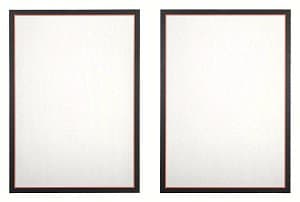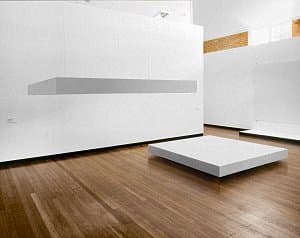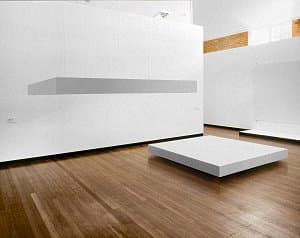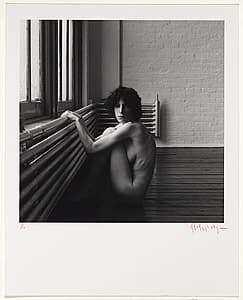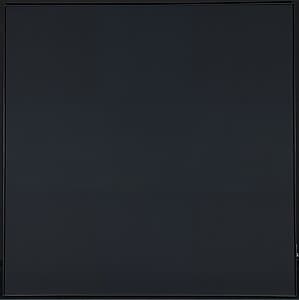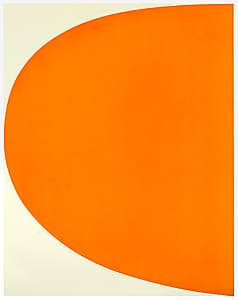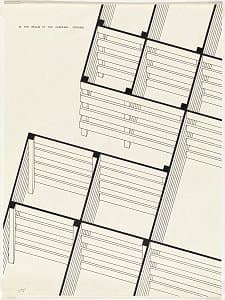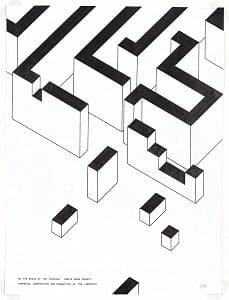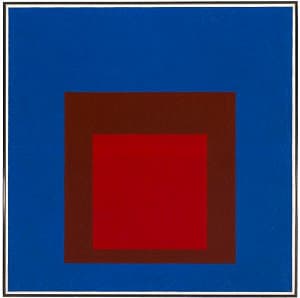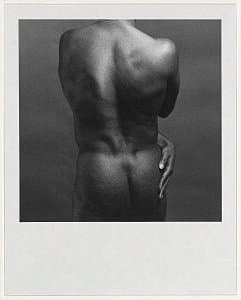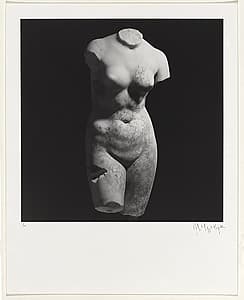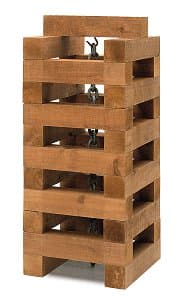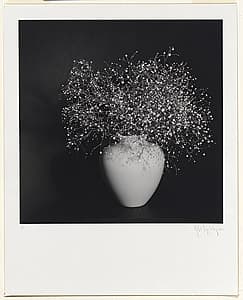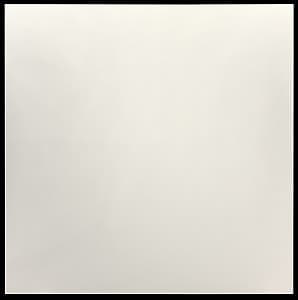Minimalism
- Josef Albers
- Carl Andre
- Jo Baer
- Fritz Glarner
- Donald Judd
- Ellsworth Kelly
- Robert Mapplethorpe
- Agnes Martin
- Robert Morris
- Kenneth Noland
- Ad Reinhardt
- Robert Ryman
Minimalism is the term used to describe radical developments within the New York art scene of the 1960s and is characterised by an aesthetic of austerity, sculptures involving reductive and primary forms in modular and serial arrangements, fabricated using industrial materials and methods, and simple geometric and monochromatic paintings. This movement, which caused initial outrage among conservative critics and bewilderment from a disenfranchised public, is now regarded as one of the foundation stones of contemporary art.
Donald Judd and Robert Morris, active both as artists and writers, helped to define Minimalism. In his influential article ‘Specific Objects’ published in the Arts Yearbook of 1965, Judd claimed that ‘Half or more of the best new work in the last few years has been neither painting nor sculpture’.[4] He identified a new category or type of self-contained three-dimensional work―the specific object. Minimalism rejected the traditional notion of representational sculpture, focusing on industrial materials and simple geometric forms.
Painters affiliated with Minimalism employed a range of ‘reductive’ approaches; shaped canvases, simple repeated geometric and grid formats, and serial or ‘systemic’ strategies. These painters also highlighted the often-overlooked heterogeneity within Minimalism, insisting on an individual’s touch in a field dominated by industrial materials and finishes.
[4] Donald Judd, ‘Specific Objects’, Arts Yearbook 8, 1965, p 74.


